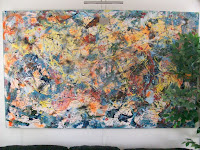Do you want to follow your passion for arts?
Jut follow and live your passion the way I did while starting Artzyme
We believe that each one of us have an inborn talent, talent to sing, draw, paint, cook, write, and the list goes on. Some talents lay hidden with in us the entire life as we chose to ignore them or never get no opportunity, avenue to showcase or even explore the same. Some of us make it a conscious decision to make our talent our livelihood and some of us just a hobby. Then there comes those moments in our lives where we want to give up our existing jobs/ source of income to pursue our talents as we want to excel in our talent too. The question that arises in most of our minds is that do we actually run for our talents or is it the right time to pursue the same.
Below are Some tips or points that will help one take a decision on the same:
Ability:- The first and foremost decision to make is my skill, talent really worth or will I will be able to make a living out of it. In Order to succeed as an artist do you have that some level of artistic ability.
That's not to say that you need to be a master painter with a fine art degree. In fact you don't really need any formal qualifications to make a living as an artist. But you do need enough skill to produce consistently high quality work, and to have the confidence in your own work to be able to sell it.
If you don't feel like you're at that level yet, then you may need to get some more training.
Today, there are many online courses, short term courses available in classical drawing and arts, to give your talent the finesse and professional touch that it requires to get you success.
One important thing to note, is that just because you are still learning, that doesn't mean that you can't be earning at the same time. An artist never stops learning. You will never reach a point where you have nothing left to learn, so you don't need to wait until you are an 'expert' before you can make money from your art.
Visit Artzyme for emerging artist.
So if you have the spark in you to follow your passion, don't get down bogged down by what you don't have, just make that one leap, and path leads to your passion with little amount of hard work and sincere dedication.
Age:- If someone was to ask me does age really matter to change one's profession and that too for a perusal for passion, I would say Yes if your heart so doing fine, and you have no ailments. As new venture that one starts comes with stress, time to dedicate, complete involvement, and a bigggg RISK... And for that you may want to start young, like in late 30's or early 40's.. As after this one may not be as agile to handle physical as well as mental stress.
Finances:- How healthy is your bank balance ? Do you have enough bank balance to make it through without any income for the next one year? Is your project self funded? Or financed ? Do you have enough assets to cover up for your liabilities? These questions and many more need to be analyzed and answered before taking the Biggg Leap. One must have a consult a good financial analyst to making good conclusions and deductions and finally arrive at a decision.
"Creativity isn't some rare gift to be enjoyed by lucky few...its part of human thinking behavior" - Tom and David Kelly of Creative Confidence.






















